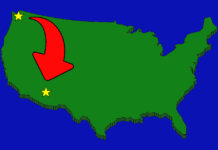Faced with a childhood immunization rate 37 percent lower than the national average in 2007, the Pinal County Board of Supervisors took steps to attack the problem by forming the Pinal County Public Health Services District.
Approved in July 2007, the district is funded by a one tenth of one percent sales tax. In two and a half years of existence, the expanded public health program has given a substantial boost to the county’s childhood immunization rates. The goal is to reach the national average of 80 percent.
“We were once at 43 percent with our childhood immunization rate,” said assistant county manager for Health and Human Services, Lisa Garcia. “Now many of our clinics are approaching 80 percent or above.”
There were a variety of steps taken to confront the childhood immunization rate through the Public Health Services District.
“We knew that expanding clinic hours was important to allow more parents to bring their children in for immunizations,” said Public Health Director Tom Schryer. “We are now open Saturdays in Casa Grande, Apache Junction and Mammoth to allow working parents the chance to have their child immunized.”
The key, Schryer said, was being proactive rather than being reactive.
The effort to make the services more accessible worked in the first year. Pinal County’s childhood immunization rate jumped in 2009 from 43 percent to 58 percent. As stated in the county’s Managing for Results strategic priorities, the Public Health District set a target of an 80 percent childhood immunization rate by 2012.
The Apache Junction Public Health Clinic reached and exceeded that goal in 2010.
“It took a lot of work and dedication by our staff to hit that target,” Schryer said. “It’s difficult to reach that goal, and now it will be difficult to maintain that number. With a concerted effort by our staff, we can do it.”
The vaccinations are provided free of charge to infants or anyone under the age of 18. The cost of the vaccines is reimbursed through federal disease prevention programs.
Schryer stated that having a child immunized against such diseases as measles, mumps, whooping cough and chickenpox saves money in the long run.
“It’s great we can receive the vaccine from Washington at no cost,” Schryer said. “It’s our tax money coming back to Pinal County to help our citizens. But if you look at the bigger picture, if a child doesn’t get immunized and gets something like mumps, you have a domino effect. First of all, the child misses class and then potentially passes the infection to other non-vaccinated children. Next, the parent has to stay home from work to care for the child.”
Taking a proactive stance in the battle to increase the childhood immunization rate has meant some innovative thinking on the part of the Public Health Services District.
The county has partnered with Wyeth Pharmaceuticals to send out reminder cards to all county parents. The Public Health District has made a concerted effort to educate parents of the need to immunize their children. Finally, the county has started to case manage all children under the age of two in an effort to make sure they are properly immunized.
Those measures have resulted in the county becoming the primary vaccination source for approximately 3,900 children per year. The Public Health District has also become the provider for back to school immunizations for scores of students within the county.
“When you talk to a parent who asks, ‘why are immunizations important,’ you have to give them the facts,” Schryer said. “In the case of measles, one out of every 10 children who catches the disease will also end up with an ear infection. One out of 20 will catch pneumonia. Nearly one out of a thousand will contract encephalitis, and one or two out of a thousand are killed from measles. Those are startling statistics.”
Pinal County will be celebrating National Infant Immunization Week this week through May 1.
File photo

![Province writer opens the athlete’s mind in new book Tom Schuman, a Province resident, poses with a copy of his new book, "My Wide World of Sports," outside his home on May 2, 2024. [Monica D. Spencer]](https://www.inmaricopa.com/wp-content/uploads/2024/05/spencer-050224-tom-schuman-sports-book-web-01-218x150.jpg)







![Maricopa’s ‘TikTok Rizz Party,’ explained One of several flyers for a "TikTok rizz party" is taped to a door in the Maricopa Business Center along Honeycutt Road on April 23, 2024. [Monica D. Spencer]](https://www.inmaricopa.com/wp-content/uploads/2024/04/spencer-042324-tiktok-rizz-party-flyer-web-218x150.jpg)

![City gave new manager big low-interest home loan City Manager Ben Bitter speaks during a Chamber of Commerce event at Global Water Resources on April 11, 2024. Bitter discussed the current state of economic development in Maricopa, as well as hinting at lowering property tax rates again. [Monica D. Spencer]](https://www.inmaricopa.com/wp-content/uploads/2024/04/spencer-041124-ben-bitter-chamber-property-taxes-web-218x150.jpg)
![Maricopa restaurateur makes Food Network connection [Namkeen Dhaba]](https://www.inmaricopa.com/wp-content/uploads/2024/04/439456716_377105198650519_7536248579664805896_n-218x150.jpg)


![O’Reilly gears up for second Maricopa location An exterior view of O'Reilly Auto Parts on John Wayne Parkway on May 2, 2024.[Monica D. Spencer]](https://www.inmaricopa.com/wp-content/uploads/2024/05/spencer-050224-oreilly-second-location-web-100x70.jpg)
![Province writer opens the athlete’s mind in new book Tom Schuman, a Province resident, poses with a copy of his new book, "My Wide World of Sports," outside his home on May 2, 2024. [Monica D. Spencer]](https://www.inmaricopa.com/wp-content/uploads/2024/05/spencer-050224-tom-schuman-sports-book-web-01-100x70.jpg)